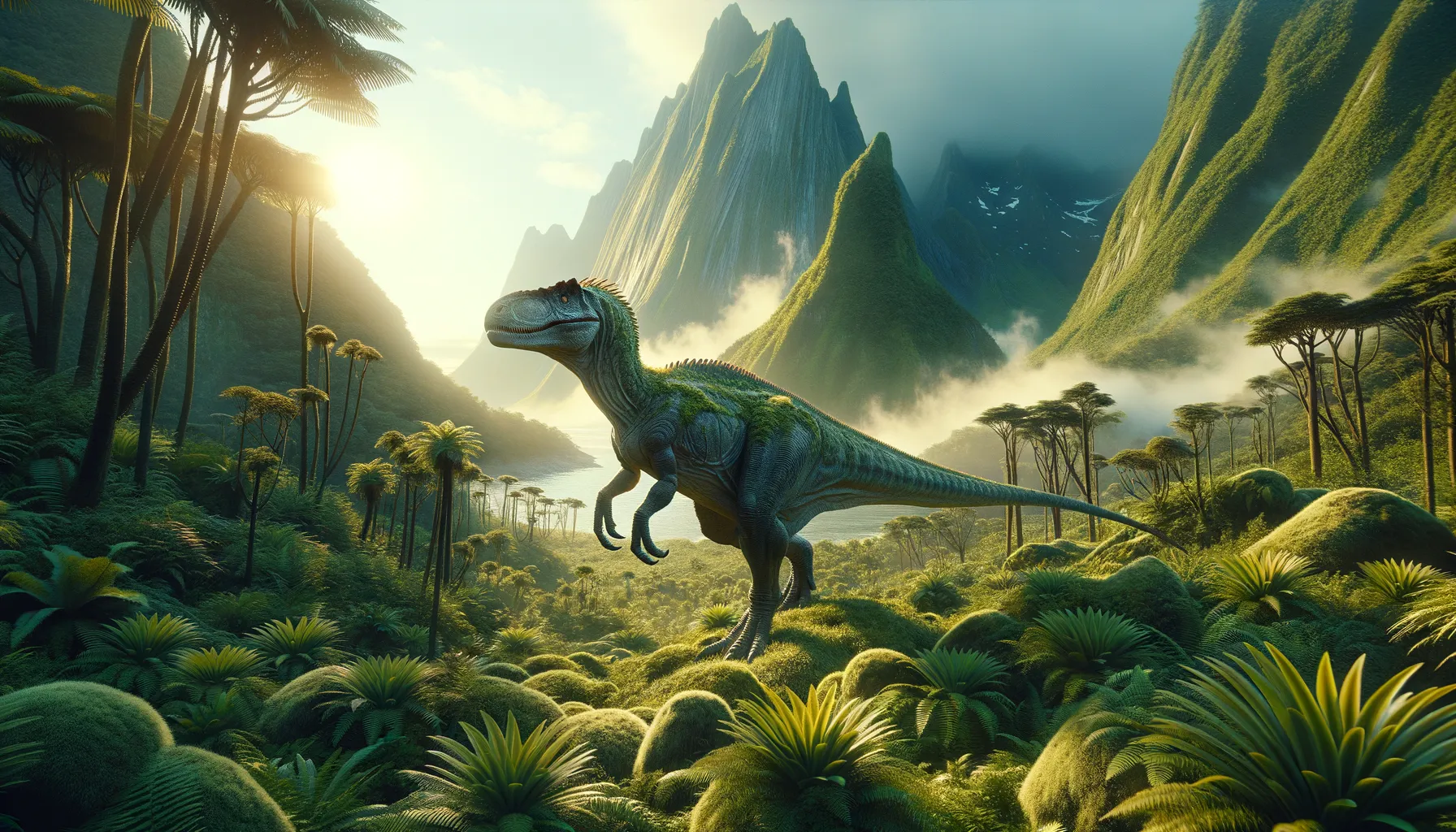
Eucercosaurus
A quiet grazer of the ancient plains.
Period
Cretaceous
Length
Roughly 4 to 5 meters in length.
Height
Approximately 2 meters tall at the hip.
Weight
Around 1,200 kg or more.
Eucercosaurus was a small, herbivorous dinosaur that roamed the Earth during the Cretaceous period. Known for its distinctive body structure, it had relatively short legs, suggesting a slower pace. Although initially discovered several decades ago, its fossil records are sparse, and thus much of its life remains a mystery. Eucercosaurus shared its environment with other prehistoric creatures, each adapting to the rich, lush landscapes around.
Diet
Eucercosaurus primarily fed on low-lying vegetation, such as ferns and cycads. Its diet was well-suited for the lush, plant-rich environments of the Cretaceous period.
Hunting
Eucercosaurus was a herbivore and did not hunt other animals. It likely foraged in groups, using numbers as a defense against predators.
Environmental challenges
Eucercosaurus faced challenges such as changing climates and predation from larger carnivorous dinosaurs. Adaptive behaviors likely included staying in herds to lower individual risk. Additionally, it had to contend with natural disasters, which were prevalent during the Cretaceous period.
Speed
Likely slow to moderate due to its size.
Lifespan
Estimated to be similar to other herbivorous dinosaurs.
First discovery
First discovered in England in the 19th century.
Fun Facts
- Eucercosaurus is known primarily from partial remains, so there's still much mystery about its full appearance.
- The name 'Eucercosaurus' means 'well-shaped lizard', which hints at its presumed elegant structure.
- Eucercosaurus is believed to have lived during the late Jurassic period.
- Despite its impressive name, Eucercosaurus is thought to have been a small, plant-eating dinosaur.
- Fossils of Eucercosaurus have been found in England, making it a part of the rich dinosaur heritage of that region.
Growth and Development
Eucercosaurus likely experienced steady growth rates, similar to other herbivorous dinosaurs. Being a slow-growing species, it relied heavily on nutrient-rich plants and safe habitats for optimal development. Young Eucercosaurus would have benefited from the protection of adults in the group.
Habitat
Eucercosaurus inhabited lush, forested environments that offered ample vegetation. These areas were likely shared with various other plant-eating and carnivorous dinosaurs. Its habitat provided both food and protection against predators, making it an ideal place for herd living.
Interaction with other species
Eucercosaurus existed alongside other herbivorous species, often collaborating in mixed-species groups for protection. Territorial disputes with larger herbivores were rare, as Eucercosaurus tended to occupy specific niches. Predators would have posed significant threats, but herd behavior and environmental awareness were primary defenses.
Natural lifespan
Its natural lifespan might have ranged from 20 to 30 years.
Reproduction
Reproduction likely involved laying eggs in secure, hidden nests. Parental care might have included guarding the nest and aiding hatchlings. The reproductive cycle was probably seasonal, aligning with climate conditions conducive to egg development.
Social behaviour
Eucercosaurus was probably a social creature, living and foraging in herds for mutual protection. Cooperation within the group allowed for better resource allocation and enhanced security against predators.
Fossil locations
Fossil fragments have primarily been found in England, particularly within layers dating to the Cretaceous period. Discoveries have been scarce, making it difficult to assemble a complete fossil record. Ongoing excavations continue to search for more complete remains to better understand this dinosaur.
